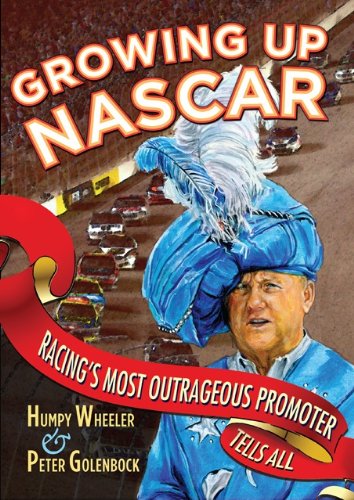When we finished Humpy Wheeler’s tell-all book about his life and times in NASCAR we were left thinking that Wheeler wasn’t done being the sport’s most renowned promoter. The book spans the length of Wheeler’s life from his youngest days fixing and selling bicycles through his time owning and operating his own track, and ultimately rising to become the president of SMI, Bruton Smith’s massive race track operation. There are lots of great personal stories about drivers and lots of time spent on the prickly relationship between Wheeler and Bruton Smith.
There are several sides to the book that grabbed our interest. The first is Wheeler’s history in the sport and how rough and tumble the world of stock car racing really was during the 1950s and ’60s. The stories of racer revolts, fights, guns being fired, and people being whacked with bats during Wheeler’s time running a dirt track called Robinwood Speedway are enthralling. It is also clear that it was those times and experiences, where Wheeler’s guile and promotional ability were the only things keeping him fed and housed, that set him up to be one of the all time great promoters at the NASCAR level.
Call us dummies, but we never really thought that there would be much in the way of promotion for NASCAR races. Growing up in the era of the sport’s super popularity and rise to the forefront of the American racing landscape, it never dawned on us that back in the day, you really had to get creative to have people show up at your race. Working the media, doing wacky things to get attention, and on occasion sheer luck all played into Wheeler’s hand during his time running Charlotte Motor Speedway.
Then there’s the gossipy, insider side of the book that we really loved, especially the stuff about Bruton Smith and Wheeler’s relationship with him. It seemed that both men realized the others’ strengths and how they worked to benefit each, but the marriage was never a perfect one. This passage from the book is very telling:
“…Because to him rules don’t count. Bruton makes the rules. And this was a constant battle because I preferred propriety and I hated ostentation. I wanted things that regular, working, race fans could use: clean bathrooms, paved parking areas, placed that they would feel comfortable, and better and wider seats. I wanted to spend money on traffic control so fans could get in and out of the track easily and quickly. Not that he was against that, but when he would build a press box for instance, he ordered mahogany walls. The writers don’t care about mahogany walls. And we we would decorate suites, there was no limit to the spending. Bruton loved suites, I hated them. That was because everyone wanted to get in them for free. It cost a great deal to build them and you were taking so much away from the race fan.”
Wheeler ultimately cites the construction of zMax Dragway as the reason for his departure from the company. From the book we got the impression that Wheeler felt he was being dealt around with many of the things happening at SMI during his final years.
This is a great read and educated us lots about the business of being a promoter, lots about NASCAR history and kept us wanting more of the great inside stories about the racing and racing business luminaries that Wheeler spent his life working around.
100% BangShift.com approved!
You can score the book from Motorbooks.com or at your local book seller
























